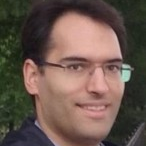Advanced Numerical Methods and Structural Complex Systems Monitoring Process
A special issue of Mathematical and Computational Applications (ISSN 2297-8747). This special issue belongs to the section "Engineering".
Deadline for manuscript submissions: closed (15 November 2023) | Viewed by 4178
Special Issue Editors
Interests: composite materials; masonry structures; numerical modeling; mechanical engineering; bridge engineering; modal analysis; dynamics; civil engineering; materials engineering; experimental characterization; concrete durability
Special Issues, Collections and Topics in MDPI journals
Interests: structural integrity and reliability analysis; damage tolerance design and life prediction; artificial intelligence and health assessment
Special Issues, Collections and Topics in MDPI journals
Interests: structural integrity; fatigue; fracture mechanics; structure analysis; probabilistic models
Special Issues, Collections and Topics in MDPI journals
Interests: multivariate analysis; panel data analysis; generalized estimating equations; regression diagnostics for generalized estimating equations; Poisson factor models; proportional odds model; stereotype logistic model; log ratio analysis; decomposition in main effects and interaction term in multiple contingency tables; partial least squares-path modeling
Interests: interpretability principal component analysis; non symmetrical correspondence analysis; multivariate methods for customer satisfaction evaluation
Interests: modeling of offshore structures and offshore structural components; structural theories of plates and applied mathematical modeling; mechanics of solids and structures; study of composite laminated structures and advanced composite materials; fracture mechanics and crack propagation and initiation; applied numerical methods such as finite element method and mesh-free element method
Special Issues, Collections and Topics in MDPI journals
Special Issue Information
Dear Colleagues,
Health Structural Monitoring is a strategic tool for the non-invasive monitoring and assessment of the health status of existing infrastructures and complex systems. It covers various sectors, such as health, aviation, mechanical, civil, electrical, and economic.
Recent advances in technology, detection techniques, but especially in the evolution of analytical and scientific predictive systems have allowed us to understand the diagnosis of material degradation and structural and non-structural damage.
This Special Issue focuses on recent developments in theoretical, computational, experimental, and practical aspects in the field and aims to cover several topics, namely sensors for structural health monitoring, damage detection and characterization algorithms, structural alarm systems, model-based structural life prediction methods, application of SHM for different exceptional loads, and influence of environmental and operational conditions.
It is desirable to present processes and analyses and innovative applications that constitute a synergistic and robust dialogue between advanced detection techniques and powerful simulators to make all the knowledge about the physical system available and perform early detection damage, precise diagnosis, and safe decision making.
The guest editors of this Special Issue hope to attract and obtain the contributions of engineers, mathematicians, and material scientists, among others, allowing for the creation of a multidisciplinary collection of innovative works and stimulating further discussions on these ground-breaking topics.
Prof. Dr. Francesco Fabbrocino
Prof. Dr. Shun-Peng Zhu
Dr. José A.F.O. Correia
Dr. Anna Crisci
Dr. Biagio Simonetti
Dr. Nicholas Fantuzzi
Guest Editors
Manuscript Submission Information
Manuscripts should be submitted online at www.mdpi.com by registering and logging in to this website. Once you are registered, click here to go to the submission form. Manuscripts can be submitted until the deadline. All submissions that pass pre-check are peer-reviewed. Accepted papers will be published continuously in the journal (as soon as accepted) and will be listed together on the special issue website. Research articles, review articles as well as short communications are invited. For planned papers, a title and short abstract (about 100 words) can be sent to the Editorial Office for announcement on this website.
Submitted manuscripts should not have been published previously, nor be under consideration for publication elsewhere (except conference proceedings papers). All manuscripts are thoroughly refereed through a single-blind peer-review process. A guide for authors and other relevant information for submission of manuscripts is available on the Instructions for Authors page. Mathematical and Computational Applications is an international peer-reviewed open access semimonthly journal published by MDPI.
Please visit the Instructions for Authors page before submitting a manuscript. The Article Processing Charge (APC) for publication in this open access journal is 1400 CHF (Swiss Francs). Submitted papers should be well formatted and use good English. Authors may use MDPI's English editing service prior to publication or during author revisions.
Keywords
- computational structural modeling
- mathematical and computational approaches to composites
- nonlocal and non-standard mathematical models in continuum mechanics
- smart and multi-field materials and structures
- multi-scale mathematical and computational modeling
- applied numerical methods
- finite element methods
- dynamics of materials and structures
- computer-aided structural engineering
- machine learning
- building information modeling










